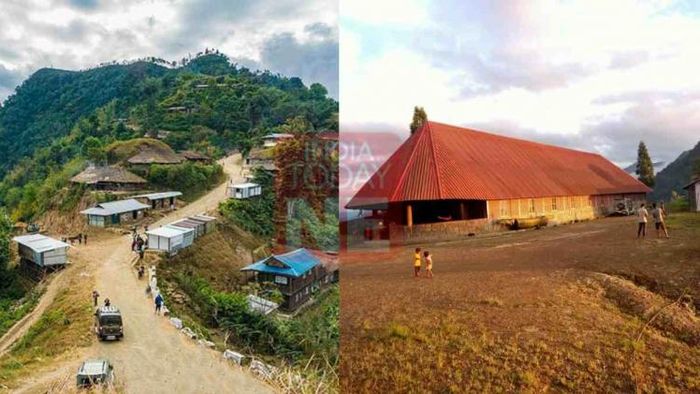Why people of this Nagaland village enjoy dual citizenship of India and Myanmar
Angh's house is the one where the bedroom is in India and the living room is in Myanmar. And the main kitchen is right on the border, with pillar No. 154 on the village hill.

- Jan 06, 2023,
- Updated Jan 06, 2023, 1:52 PM IST
Longwa is one of the largest villages in the Mon district of Nagaland. The international border that separates India and Myanmar runs right through the Angh's house and the residents of Longwa village have dual citizenship.
Angh's house is the one where the bedroom is in India and the living room is in Myanmar. And the main kitchen is right on the border, with pillar No. 154 on the village hill.
Longwa village has a total population of 6703 people and 745 households, with 2862 males and 2841 females. Longwa is part of the 44 AC Phomching constituency under the Mon district's Indian side and the Yochen Lahe township constituency on the Myanmar side.
The most intriguing aspect of this location is that the international border between India and Myanmar runs directly through Angh's house, and the people of Longwa village have dual citizenship. Residents of Longwa village have complete freedom of movement in both India and Myanmar.
Longwa's Angh is one of Mon district's seven Anghs. The Anghs control three villages on the Indian side and five villages on the Myanmar side. They have extremely strong customary, traditional, and cultural ties.
Longwa village is home to the Konyak Naga tribe, India's last headhunters. The Konyak tribe valued the practice of headhunting. When rival tribes fought and whichever tribe won, they returned the heads of their opponents as a symbol of power, might, prosperity, and, believe it or not, fertility. However, in 1960, this custom came to an end.
While speaking to a resident of Longwa village, who is a teacher by profession, Mr Nahlak told India Today NE, "We can't divide the village between two countries, it's Longwa village, we live like brothers and sisters despite of man-made boundaries. Although officially it is demarcated between two countries i.e. India and Myanmar. It does not affect our brotherhood. "
Mr Nahlak further said " We are dual citizens, we can vote for both the countries, we choose as we like as we fall under one Chief Angh under one village council. We can vote for both countries. Myanmar development is slow, but development is present in India, and we assist our village brothers and sisters in whatever way we can."
Most notably, in Longwa village, there is a Burmese school where students from both countries study. The medium of instruction is Burmese only, and the teachers are from Myanmar. The Burmese school has approximately 150 Indian students. Longwa village's school was established in 2014.
Longwa village in Mon district, Eastern Nagaland, is a very remote village with only one health center with one nurse, one government primary school, and one government middle school which is open for citizens from both countries.
The Konyak Nagas' rich culture and tradition draw many visitors to the Mon district. Longwa is a popular destination for tourists, who want to learn more about Naga culture and traditions, as well as see firsthand how the residents of this remote village enjoy dual citizenship.